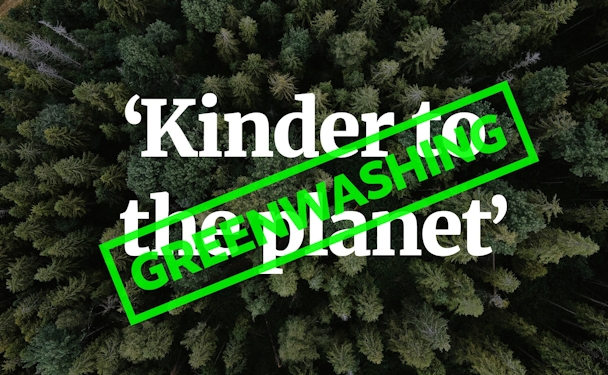New legal frameworks for greenwashing mean brands must get their messaging right
It’s been four decades in the making, but major jurisdictions are finally implementing legal frameworks around sustainability messaging laws, says Rebecca Ward. Here’s what the guidance says.

Brands must avoid the use of vague messaging and imagery or risk falling foul of consumer law / Image courtesy of Radley Yeldar
The term greenwashing first entered the sustainability lexicon in the 1980s, when Jay Westerveld, an American Environmentalist, saw the irony of a rapidly expanding Fijian hotel – with what looked like little regard for the surrounding natural area – asking guests to re-use their towels.
Since then, businesses worldwide have been accused of greenwashing. Oil and gas companies have provided some particularly spectacular displays, including Chevron excitedly telling us how they will (try their best to) drill for oil during the winter, while Montana’s native bears hibernate – “so that nature can have spring all to herself”. I’m speechless. Did anyone actually fall for it?
At the same time, due to changes in the law which make it more complicated to make unfounded claims, some firms are choosing to remain quiet on their net-zero goals. It’s a complex field to navigate, but at least the legislation is in place.
Want to go deeper? Ask The Drum
- What new 2023 regulations target greenwashing?
- How do vague environmental claims damage brand reputations?
- Why is the ASA taking a firm approach on greenwashing?
- What steps should brands take to prepare for new greenwashing restrictions?
- How is the Australian ACCC protecting consumer trust from greenwashing?
Green guides
Somehow, it has taken over 40 years for the authorities to catch up. Jurisdictions including the EU, UK, and USA are now publishing legal frameworks specifically designed to hold businesses to account when it comes to making claims about their environmental and social impact.
These include in the EU, the Green Claims Directive; in the UK, the Green Claims Code; in the USA, Guides for the Use of Environmental Marketing Claims (also known as the Green Guides). While each of these contains its own nuance, the objectives – and principles to achieve them – are comparable.
Advertisement
These anti-greenwashing legal frameworks aim to protect consumers by increasing the transparency of environmental and social claims made by companies. They focus on environmental claims linked to a company or product that imply a positive or less damaging impact, compared to other products or organizations.
The hope is that this will empower consumers to make more informed decisions, using their spending power to drive positive change. To do this, these frameworks set out clear rules about what businesses can and cannot say, and – perhaps most importantly – the evidence required to make claims in a compliant way.
In my opinion, the UK’s Green Claims Code most succinctly summarises the dos and don’ts through the six principles it sets out for businesses to follow:
-
Claims must be truthful and accurate
-
Claims must be clear and unambiguous
-
Claims must not omit or hide important relevant information
-
Comparisons must be fair and meaningful
-
Claims must consider the full life cycle of the product or service (creation to disposal)
-
Claims must be substantiated
Clear communication
You’re probably all too familiar with greenwashing sustainability communications. These generic, cliché communications tell us that businesses are “committed to protecting the environment” and that products are “eco-friendly”, while showing us pictures of hands cupping seedling trees. Come to think of it, I could probably make a pretty exhaustive bingo card.
Such communications are likely to fall foul of anti-greenwashing legislation, as they make vague, unsubstantiated claims. At the same time though, as mentioned, many businesses are falling into an era of green-hushing – the practice by which a business goes silent on sustainability, while continuing to progress toward targets behind closed doors.
Advertisement
Both practices are equally dangerous. We need openness and clear communications regarding products’ sustainability credentials to empower consumers to make more informed choices. This will also allow us to hold businesses to account as they strive for continual improvement. All this enables a transition towards a more sustainable model of consumption.
Helpfully, we’ve put together a guide to avoid greenwashing, in our latest publication “Behind the Green”. The guide includes a breakdown of legislation in the UK, EU, and US, including who they apply to and how to adhere, as well as our four simple and actionable principles to avoid greenwashing.
Content by The Drum Network member:

Radley Yeldar
Radley Yeldar is an award-winning, independent, London and Birmingham-based creative consultancy. Our 200-strong team of specialists has been helping to create a...
